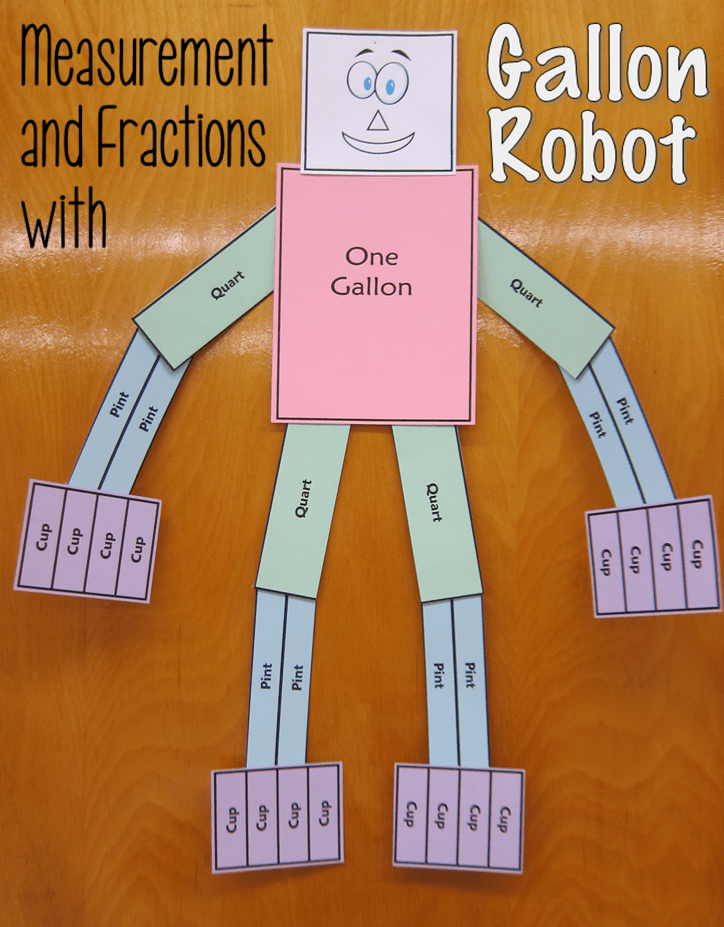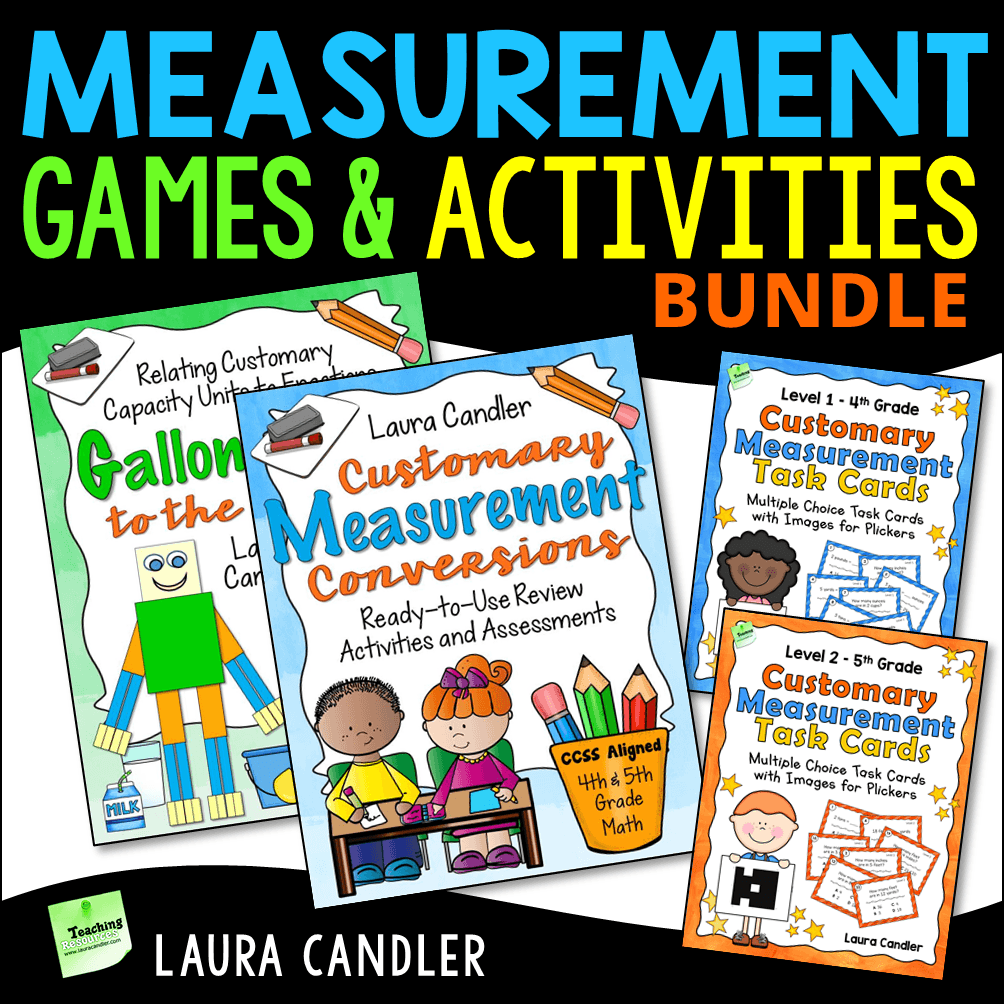
Who can remember how many cups are in a gallon and how many pints are in a quart? I have to admit that I used to look this information up every time I needed it. The amounts are so arbitrary and random that I couldn’t seem to memorize them. That all changed when I met Mr. Gallon, whom I affectionately renamed with the gender-free term Gallon Robot.
Variations of Mr. Gallon are all over the Internet, and I’m not sure if anyone knows exactly who dreamed up the concept. I first heard about it when my older daughter Wendy was in 3rd grade. Her teacher, Sue Simon, introduced her students to this visual model so they could easily remember the conversions between gallons, quarts, cups, and pints.
The large rectangle in the middle represents one gallon, the four pink rectangles represent four quarts, the green rectangles represent pints, and the small orange rectangles represent cups. When you look at the model, it’s easy to see that there are 8 pints in a gallon, 2 pints in a quart, and so on. As soon as I met Mr. Gallon, I never had to look up those amounts again! I immediately taught the model to my 5th graders and began sharing the technique with teachers.
Relating Customary Capacity Units to Fractions
One thing that I love about Gallon Robot is how you can use this model to reinforce fraction concepts at the same time that you are reviewing customary units of capacity. I created a comprehensive packet of teaching materials to go along with the basic patterns shown above to make it easy to teach these concepts.
When I created the patterns for Gallon Robot, I was very careful to make each part fractionally correct so that students can explore how the units are related. After students cut out all the pieces, they can use them in a fraction lesson before assembling them into Gallon Robot. For example, when students place the four quart patterns on top of the gallon pattern, they will see that four quarts equal one gallon. The patterns are black and white outlines, and I suggest printing each part on a different color paper to help students distinguish between them.
Gallon Robot to the Rescue includes cooperative learning activities, math center games, word problems, printables, teacher demonstration pages, and more! Here are a few sample pages from this resource, including a fun game called Fill ‘Er Up in which students answer questions, spin a spinner, and add cups, pints, or quarts to their gallon buckets. The first to fill his or her bucket is the winner!
If you teach customary measurement, be sure to check out Customary Measurement Conversions, too. This resource includes games, activities, and lessons to make measurement fun!
Both resources are included in my Measurement Games and Activities Bundle along with two sets of measurement task cards.With the activities in this bundle, your students will have fun as they learn to master customary measurement conversions!











